*NURSING > QUESTIONS & ANSWERS > NSG 509Alterations of Cardiovascular Function in Children (All)
NSG 509Alterations of Cardiovascular Function in Children
Document Content and Description Below
1. Most cardiovascular developments occur between which weeks of gestation? a. Fourth and seventh weeks c. Twelfth and fourteenth weeks b. Eighth and tenth weeks d. Fifteenth and seventeenth w... eeks ANS: A Cardiogenesis begins at approximately 3 weeks’ gestation; however, most cardiovascular development occurs between 4 and 7 weeks’ gestation. 2. The function of the foramen ovale in a fetus allows what to occur? a. Right-to-left blood shunting c. Blood flow from the umbilical cord b. Left-to-right blood shunting d. Blood flow to the lungs ANS: A The nonfused septum secundum and ostium secundum result in the formation of a flapped orifice known as the foramen ovale, which allows the right-to-left shunting necessary for fetal circulation. The foramen ovale is not involved in the blood flow described by the other options. 3. At birth, which statement is true? a. Systemic resistance and pulmonary resistance fall. b. Gas exchange shifts from the placenta to the lung. c. Systemic resistance falls and pulmonary resistance rises. d. Systemic resistance and pulmonary resistance rise. ANS: B From the available options, the only change that takes place in the circulation at birth is the shift of gas exchange from the placenta to the lungs. 4. When does systemic vascular resistance in infants begin to increase? a. One month before birth b. During the beginning stage of labor c. One hour after birth d. Once the placenta is removed from circulation ANS: D The low-resistance placenta is removed from circulation, which causes an immediate increase in systemic vascular resistance to approximately twice of that before birth. 5. Which event triggers congenital heart defects that cause acyanotic congestive heart failure? a. Right-to-left shunts c. Obstructive lesions b. Left-to-right shunts d. Mixed lesions ANS: B Congenital heart defects that cause acyanotic congestive heart failure usually involve left-to-right shunts (see Table 33-4). Acyanotic congestive heart failure does not involve any of the other options. 6. Older children with an unrepaired cardiac septal defect experience cyanosis because of which factor? a. Right-to-left shunts c. Obstructive lesions b. Left-to-right shunts d. Mixed lesions ANS: A Older children who have an unrepaired septal defect with a left-to-right shunt may become cyanotic because of pulmonary vascular changes secondary to increased pulmonary blood flow. None of the other options accurately describe the process that results in cyanosis. 7. Which congenital heart defects occur in trisomy 13, trisomy 18, and Down syndrome? a. Coarctation of the aorta (COA) and pulmonary stenosis (PS) b. Tetralogy of Fallot and persistent truncus arteriosus c. Atrial septal defect (ASD) and dextrocardia d. Ventricular septal defect (VSD) and patent ductus arteriosus (PDA) ANS: D Congenital heart defects that are related to dysfunction of trisomy 13, trisomy 18, and Down syndrome include VSD and PDA (see Table 33-2). The other defects are not associated with dysfunction of trisomy 13, trisomy 18, and Down syndrome. 8. An infant has a continuous machine-type murmur best heard at the left upper sternal border throughout systole and diastole, as well as a bounding pulse and a thrill on palpation. These clinical findings are consistent with which congenital heart defect? a. Atrial septal defect (ASD) c. Patent ductus arteriosus (PDA) b. Ventricular septal defect (VSD) d. Atrioventricular canal (AVC) defect ANS: C If pulmonary vascular resistance has fallen, then infants with PDA will characteristically have a continuous machine-type murmur best heard at the left upper sternal border throughout systole and diastole. If the PDA is significant, then the infant also will have bounding pulses, an active precordium, a thrill on palpation, and signs and symptoms of pulmonary overcirculation. The presentations of the other congenital heart defects are not consistent with the described the symptoms. [Show More]
Last updated: 1 year ago
Preview 1 out of 18 pages
Instant download
.png)
Buy this document to get the full access instantly
Instant Download Access after purchase
Add to cartInstant download
Reviews( 0 )
Document information
Connected school, study & course
About the document
Uploaded On
Apr 12, 2021
Number of pages
18
Written in
Additional information
This document has been written for:
Uploaded
Apr 12, 2021
Downloads
0
Views
36


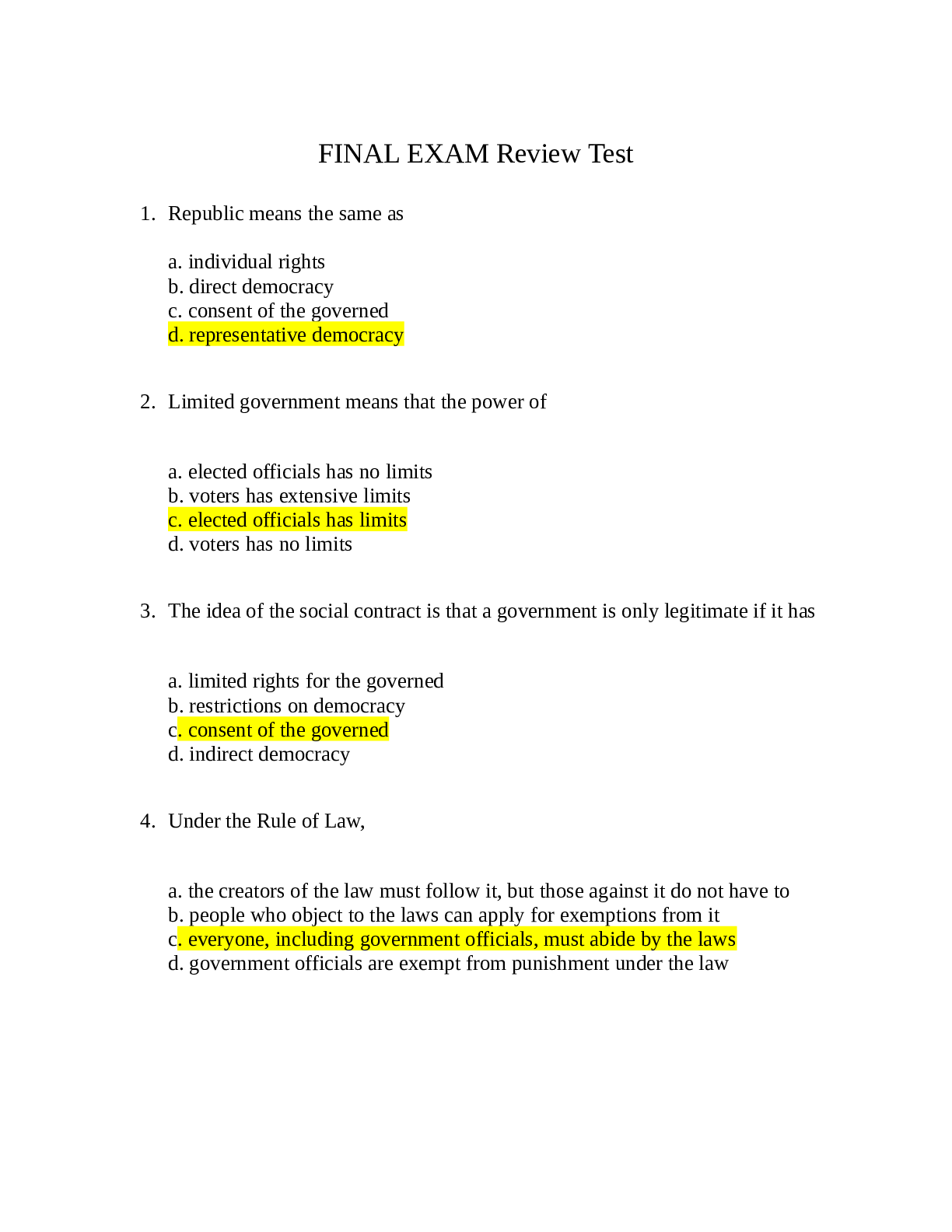
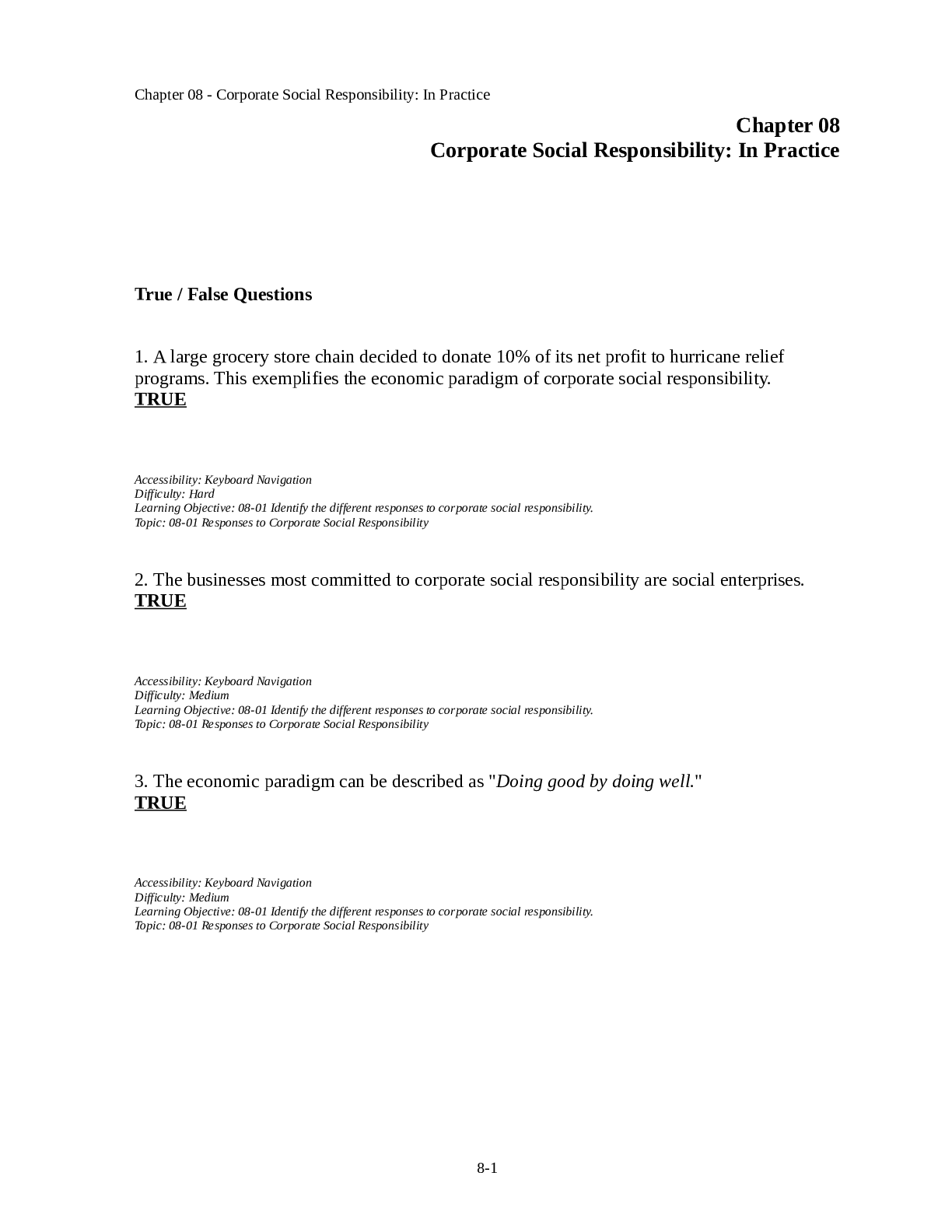

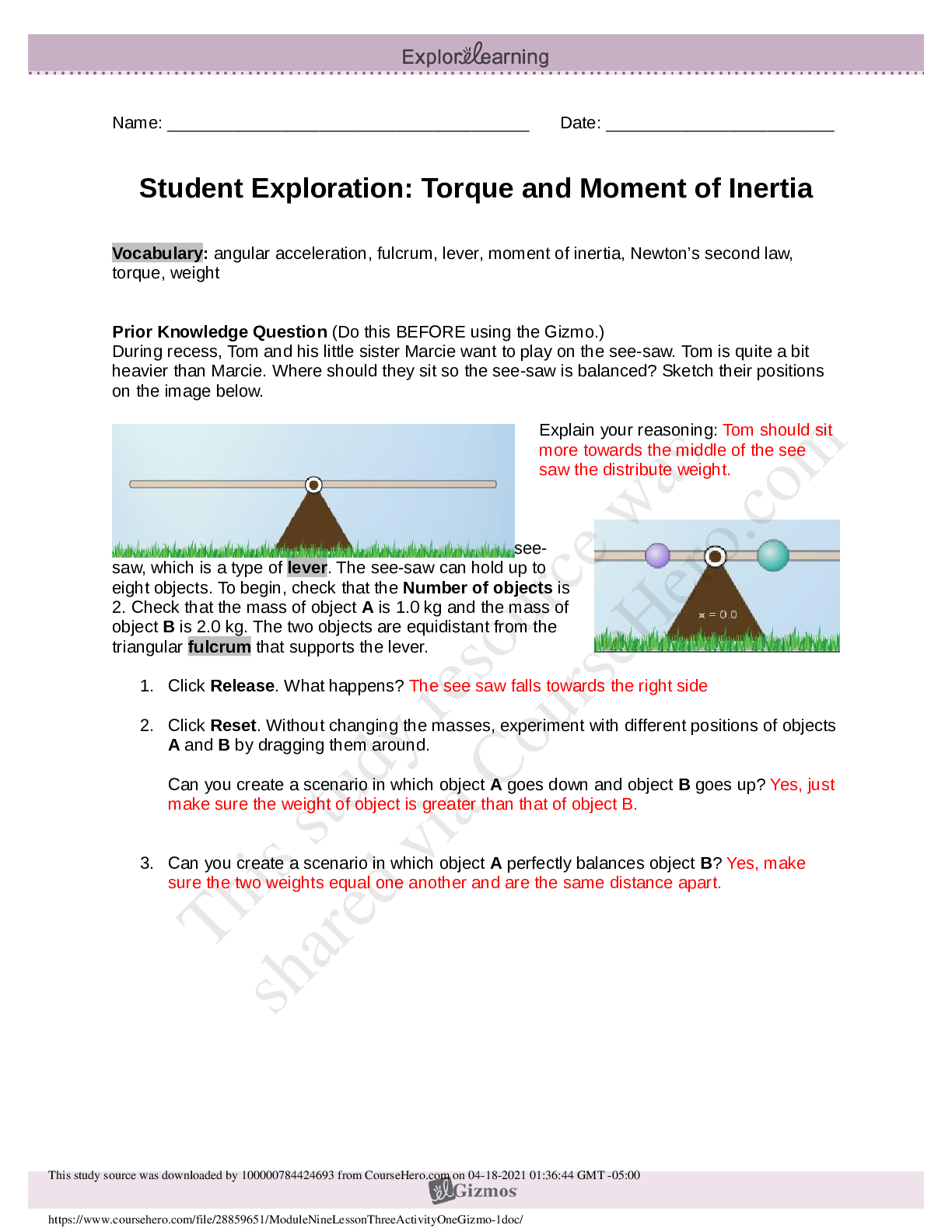

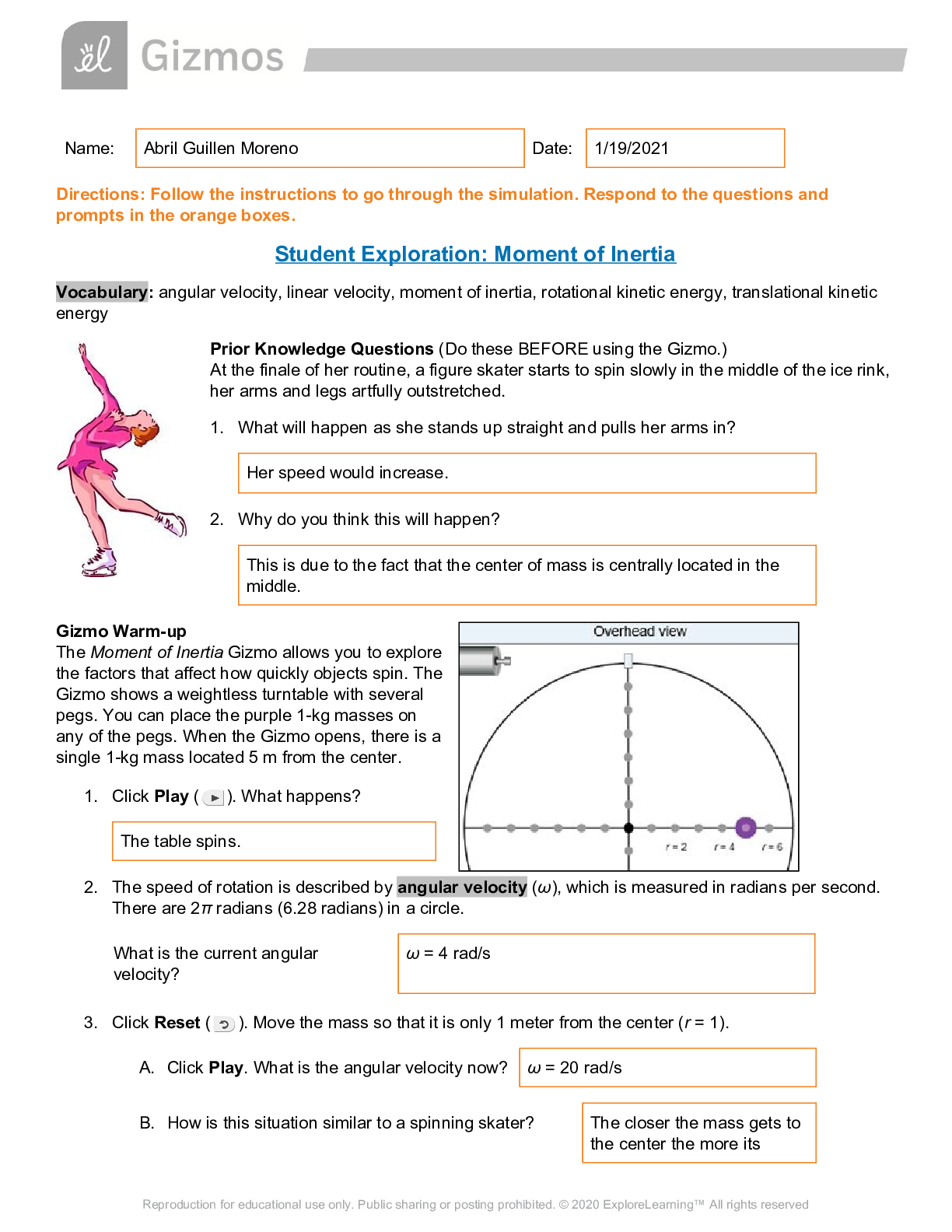

.png)
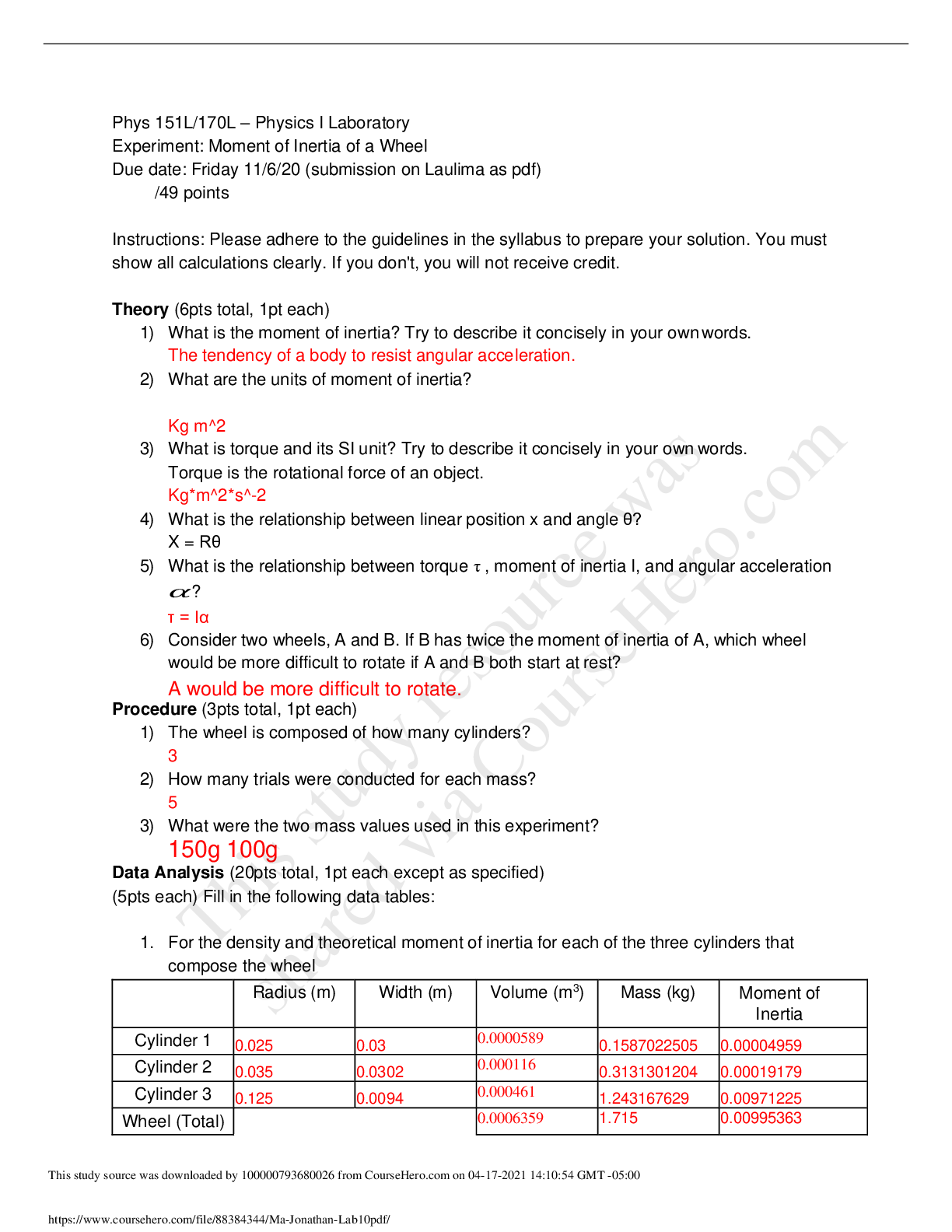


 Med Surg test Questions and Answers with Explanations, 100% Correct, Download to Score A.png)

 Correct Study Guide, Download to Score A.png)
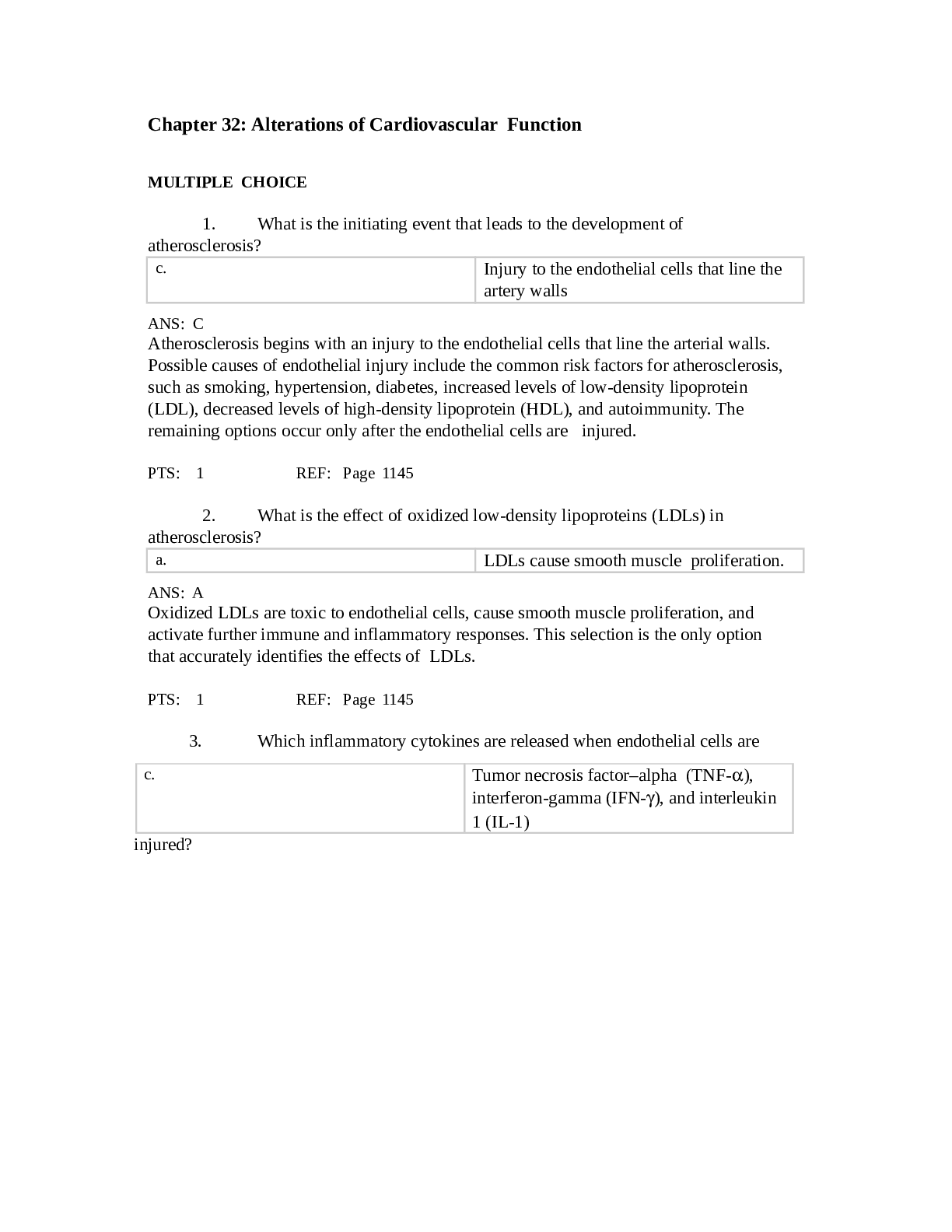
.png)
.png)

